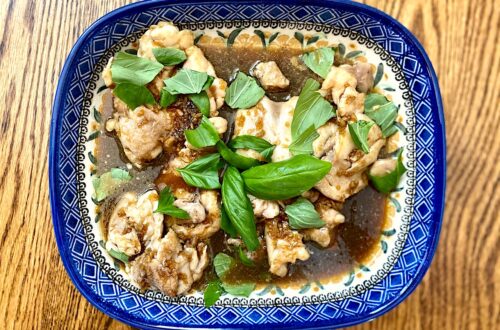-
Levain Chocolate-Chip Walnut Cookies
Today’s topic is cocoa. Full disclosure: I spend a lot of my real working life working on issues related to child labor in the cocoa industry, which made it was really hard to keep this post short. (Sorry!) For weeks I’ve been searching for the right recipe for chocolate – something a little different, but not too difficult. Luckily, last week a friend raved to me about Levain cookies. Levain cookies come from New York City’s Levain Bakery, which apparently is very well-known. As a true Midwesterner, I had never heard of the bakery or the cookies, but was fascinated by the idea of a chocolate chip cookie the size of a small cake. I have no idea if these cookies actually taste like the ones at Levain Bakery, but I do know that they are incredible – and really intense. After giving away one, I pretty quickly received a text message: “Oh my God, that cookie is amazing.” They truly are. These cookies should be just cooked, golden brown on top and still gooey in the middle.
But enough about the cookie. Let’s focus on the cocoa industry, which like many commodities, has a largely hidden supply chain and a number of human rights issues. Cocoa beans are found in cocoa pods, which grow on trees. These cocoa trees can only grow in certain latitudes – between 20 degrees north and 20 degrees south of the equator. Much of the world’s cocoa – at least 60 percent – is produced in Cote d’Ivoire and Ghana. This includes most “bulk” cocoa that goes into candy, chocolate chips, Nutella, and most of what you probably buy. Unfortunately, the West African cocoa industry has numerous problems, including low wages for farmers, high incidences of child labor and forced child labor, and it is a leading cause of deforestation in Cote d’Ivoire.
-
Eggplant with Minty Tomato Sauce and Yogurt
The first year I lived in Berlin, my roommate and I cooked a lot. That year I learned to roast a chicken, not be scared of baking things I’d never heard of, and to put a lot of salt into pasta water. This dish – eggplant with minty tomato sauce and yogurt – was one of our staples, something we’d often make after coming home from a long day or for friends on the weekend. I’m not sure why, but I stopped making it for a number of years. When I decided to cook it this summer, I had no idea where I had gotten the recipe from. A quick google search showed me it is one of Madhur Jaffrey’s recipes, which explains why it’s so good. I’ve always loved eggplant, and the combination of spice and cumin cut by the creamy yogurt is a great late summer dish.
There is a lot to say about eggplants, olive oil, and tomatoes, but today’s post focuses on spices, specifically cumin. Cumin is the second most popular spice in the world, just behind pepper. Historians believe that it was first grown in Egypt, along the Nile, where it was used in the mummification process. The Greeks and Romans also used cumin, although they associated the spice with greed. Cumin didn’t remain in the Mediterranean, but spread around the world. It traveled east to Persia and then to India, as well as west to Spain and from there to North and South America. This spread of cumin explains why it is found in so many different food cultures: Indian, Iranian, Middle Eastern, Mediterranean, Mexican, Cuban, and many more.






